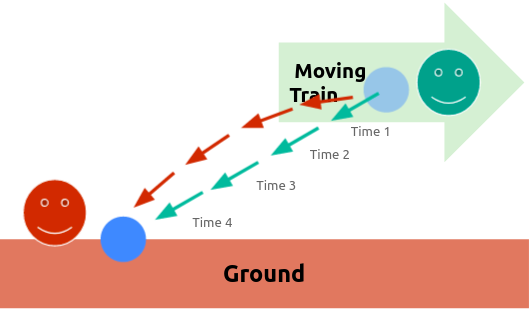Space And Time In Classical Mechanics
Table of Contents
The purpose of mechanics is to describe how bodies change their position in space with time.
What does “position” and “space” mean?
I stand at the window of a railway carriage which is travelling uniformly.
- I drop a stone on the embankment, without throwing it.
- Disregarding air resistance, I see the stone descend in a straight line.
- A pedestrian on the footpath sees this and notices that the stone falls to earth in a parabolic curve.
Do the “positions” traversed by the stone lie on a straight line or on a parabola?
What does motion “in space” mean?
We should entirely shun the vague word “space”.
- We replace it with “motion relative to a body of reference.”
- We then replace this “body of reference” with “system of coordinates.” This will allow mathematical descriptions.
In this way:
- relative to a system of coordinates rigidly attached to the carriage, the stone travels at a straight line
- relative to a system of coordinates rigidly attached to the ground (embankment), the stone travels in a parabola

This shows that there is no such thing as an independently existing trajectory. Instead all trajectories are relative to a viewpoint.
A complete description of a body’s motion must specify how that body changes its position with time. For every point on the trajectory, the time of the body must be stated. Such time-values are then the magnitudes (results of measurements) capable of observation.
Under Classical mecahnics, we imagine two identical clocks.
- One is held by an observer in the railway-carriage window
- The other is with an observer on the footpath
Each of the observers determines the position of the stone from his perspective at each tick of his clock.